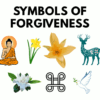
The Yin Yang is one of the most powerful Taoist cosmological symbols, that carries within it many profound secrets of the universe.
Comprising a circle that contains two interlocking, equally sized swirls, this symbol represents numerous concepts, including creation, duality, oneness, interconnectedness, eternity, balance, and the cyclic nature of the universe.
In this article, let’s delve into these meanings and explore this powerful symbol from a deeper perspective. But before we begin, let’s see how this symbol is actually drawn as that will help you better understand the deeper symbolism it contains.
How to draw the Yin Yang Symbol
In order to deeply understand the meaning of the Yin Yang symbol, it’s important to first see how it is drawn.

The above image illustrates 5 steps to draw the symbol. Here’s a brief explanation of these steps.
We begin with a circle that represents the Great Oneness (God or Source energy) as per Chinese Cosmology. We then split this circle into two halves – one white and the other black. This represents the source splitting itself into two in order to create the Spiritual and Material worlds. This is known as the Great Tipping point.
From this emerge two opposing creative energies represented by the White Circle in the upper half and the Black circle in the lower half of the original circle. These represent the divine feminine and divine masculine energies.
We then draw a smaller black circle at the center of the white circle and a smaller white circle at the center of the black circle. This represents that both polarities are deeply interconnected and contain the essence of the other within.
After completing the drawing of the symbol, you’ll notice that it portrays two equally sized swirls that seem to be rotating in a single direction. This rotation symbolizes the continuous, cyclical motion required to keep these polarities connected, essential for the universe’s sustenance. It signifies the cyclic nature of the universe and the recurring events that are necessary for life to exist.
Now that we know how the Yin Yang symbol is drawn, let’s look at the various spiritual meanings associated with this symbol.
7 Spiritual Meanings Associated with the Yin Yang Symbol
1. Creation
The Yin Yang is the ultimate symbol of creation. It depicts how a singular source splits into two opposing creative energies – the divine feminine (Yin) and the divine masculine (Yang). The interplay between these opposing energies forms the basis of all existence.
In order for these energies to interact, they need to be in a constant cyclic motion where both energies balance each other out. If Yin rises, the Yang follows suit, and vice versa. This cyclical principle manifests universally and is present in every aspect of existence. For instance, the neverending cycle of creation, preservation, and subsequent destruction to again give way for creation.
In essence, the Yin Yang depicts the world of duality (dvaita) arising from a singular source (advaita). It shows how the one becomes two and the two come together to give rise to a third aspect of balance and neutrality that forms the basis of all creation.
2. Cyclic Nature of the Universe

Building on the earlier discussion, the Yin and Yang forces converge to shape existence. To maintain their interaction, they’re engaged in perpetual cyclical movement where both energies endeavor to balance each other out.
This cosmic cycle is present in every aspect of existence. For instance, Winter transitions to Spring (Emerging Yang) progressing to Summer (Dominant Yang), which then gives way to Autumn (Emerging Yin) before circling back to Winter (Dominant Yin).

The Yin Yang symbol, resembling two intertwining swirls, perfectly symbolizes this cyclical nature of existence. At times, Yin dominates, and at others, Yang takes precedence. This never ending cycle (eternity) is encapsulated by the encompassing circle.
Some examples of universal cycles are as follow:

Day and Night Cycle:
- Morning: Emerging Yang (active energy as the day begins)
- Noon: Maximum Yang (peak of brightness and activity)
- Evening: Transition to Yin (as the day winds down and darkness sets in)
- Night: Maximum Yin (quiet, passive energy as the world rests)
Four Seasons:
- Spring: Emerging Yang (As life and energy return after the dormancy of winter)
- Summer: Dominant Yang (The height of activity, warmth, and growth)
- Autumn: Emerging Yin (As energy begins to wane and days become shorter)
- Winter: Dominant Yin (A period of rest, cold, and stillness)
Cycle of Creation:
- Creation: Yang (active energy initiating the formation)
- Preservation: Balanced Yin and Yang (maintenance and sustaining the creation)
- Transformation/Transition: Transition to Yin (as the creation starts evolving or decaying)
- Dissolution/Destruction: Yin (ending and dissolution, making way for new creation)
Moon Phases:
- New Moon: Dominant Yin (Moon is dark, a time of introspection and beginnings)
- First Quarter/Waxing Crescent: Rising Yang (Moon is growing brighter, building in strength)
- Full Moon: Dominant Yang (Moon is at its brightest, a time of culmination and realization)
- Last Quarter/Waning Crescent: Rising Yin (Moon is dimming, a period of release and reflection)
Breathing Cycle:
- Inhalation: Rising Yang (Taking in energy and oxygen, an active phase)
- Pause after Inhalation: Balanced Yin and Yang (Moment of equilibrium after taking in air)
- Exhalation: Rising Yin (Releasing and letting go, a passive phase)
- Pause after Exhalation: Dominant Yin (A brief stillness before the next breath cycle)
Water Cycle:
- Heat and Evaporation (upward movement): Yang
- Condensation and Precipitation (downward movement): Yin
Life Cycle of Plants:
- Germination and Growth: Yang
- Reproduction and Death: Yin
Life Cycle of Animals:
- Birth and Growth: Yang
- Reproduction and Death: Yin
Tidal Cycles:
- High Tide (rising): Yang
- Low Tide (falling): Yin
So on and on.
Thus the Yin Yang symbol is the perfect representation of the cyclic nature of life which is at the very core of existence.
3. Interconnectedness of all existence
Yin Yang is the ultimate symbol of unity, and interconnection. As already discussed, this symbol depicts two opposing creative energies arising out of a single source. This shows that even though they seem opposites they contain within them the same source energy.

Also, when you observe the symbol, you’ll notice a small circle within each swirl: white in the black and black in the white. This highlights that the masculine contains within it the seed of the feminine and vice versa. Thus, the masculine and feminine are interconnected and interdependent such that one cannot exist without the other. This interconnection lays the foundation of all existence and is found within all aspects of creation.
Thus the Yin Yang symbolizes that everything is interconnected and arises out of the same source.
4. Inner stillness (Wu Ji) & Neutrality

The concept of Yin Yang exists in all of existence including your own body. You have within you both the masculine and feminine energies and there is constant interplay between these energies.
The dot at the center of the Yin Yang is known as Wu Ji or still point. Irrespective of all the movement that happens on the outside, this point always remains still. This space of stillness exists within you too and you can access it by focusing on your inner center. Anchoring your attention on this stillness can help you achieve a deep sense of calm and peace irrespective of everything that happens in the material world.
This point is also your connection to your higher self and the source itself. When you connect to this point, you become free from the ego and become one with the source energy.
5. Cosmic Balance, Harmony, & Flow State (Wu-Wei)

As discussed earlier, from nothingness comes the one source which splits into two opposing polarities of Yin and Yang. These polarities by themselves cannot create anything, but once they come together they form an interconnected whole that is the basis of all creation.
These energies are constantly trying to balance each other out, which results in a perpetual cyclic motion. The intricate balance achieved by this cyclic motion is what sustains creation. Just as a bicycle requires spinning wheels to move forward, the universe depends on this balancing act for its forward motion.
The masculine and feminine energies, represented by Yin and Yang, constantly ebb and flow. As one gains prominence, the other grows to restore equilibrium. This balance symbolizes the universe’s inherent nature to return to harmony. Thus the Yin Yang is the perfect symbol of Cosmic Balance and Equilibrium.
This principle of Yin and Yang also exists within us. Every aspect of life embodies these dual energies. By harmonizing our internal Yin and Yang, we align with the natural rhythm of the universe. This alignment leads to Wu-Wei, or effortless action, allowing us to navigate life seamlessly, knowing precisely when to act and when to remain still.
6. Four Elements
As we saw earlier, in the creation of the symbol, the Yin Yang also represents the four elements, Air and Fire that are masculine (Yang) in nature and Earth and Water that are feminine (Yin) in nature. The symbol represents how these four elements are separate yet intricately connected and cannot exist without the other.
The central dot represents the fifth element of ether or source energy from which everything emergers and which is present within everything that exists.
7. 8 Trigrams of Chinese Cosmology
The Yin Yang is also the basis of the Trigram which is an important component of Chinese Cosmology. While the Yin Yang symbol encapsulates the broader idea of balance and duality, the trigrams provide a deeper, more detailed representation of how these forces manifest in various combinations in the world. There are 8 trigrams in total that represent the 8 fundamental natural phenomenons on earth.
Here’s a brief explanation of what the Trigrams are all about.

As we saw earlier when looking at the creation of the symbol, it was believed that in the beginning there was nothingness also known as the great mystery (or Wu Ji). From this comes the Tai Yi also known as the Great oneness or the Cosmic Egg. This oneness reaches a tipping point and splits within into two polarities known as Huang Ji. From the Huang Ji springs forth the two polarities of Yin and Yang.
Yang (known as Tai Yang) is represented by two solid lines while Yin (known as Tai Yin) by two broken lines. Both these polarities combine to form Tai Ji (which is the Yin Yang symbol) and represent the Great Stability. In Tai Ji, both Yin and Yang are interconnected and have the essence of the other. Tai Ji creates Shao Yin which is Yin within Yang and Shao Yang which is Yang within Yin.
Using this, we get the four basic bigrams (as shown in the image above) as follows:
- Tai Yang – Full Yang
- Shao Yin – Yin within Yang
- Shao Yang – Yang within Yin
- Tai Yin – Full Yin
Keeping these bigrams as the base and adding an additional line of Yin or Yang we derive 8 trigrams of Chinese cosmology (as depicted in the image below).

Each trigram also corresponds to a natural element or phenomenon These are as follows:
- Qian – Heaven
- Tui – Lake
- Li – Fire
- Zhen – Thunder
- Xun – Wind
- Kan – Water
- Gen – Mountain
- Kun – Earth
In essence, the trigrams provide a detailed map of how the forces of Yin and Yang play out in various aspects of existence.

The Eight Trigrams, also known as “Ba kua,” are often represented as an octagonal shape as shown in the image above. These trigrams further extend into sixty-four hexagrams, representing the continuous interplay between these forces.
8. Oneness within Duality
As we saw earlier, the symbol is created from a single circle. The circle indicates oneness and a single source. Out of this source comes two opposing yet complementary polarities that form the basis of the material world or the world of duality.
Thus Yin Yang symbolizes that everything is one and arises out of a single source. But for the material world to exist, the one has to divine into two and the interaction between these two polarities lies at the core of all creation.
Attributes of Yin and Yang
The following image outlines certain attributes of Yin and Yang, providing a clearer understanding of their representations.
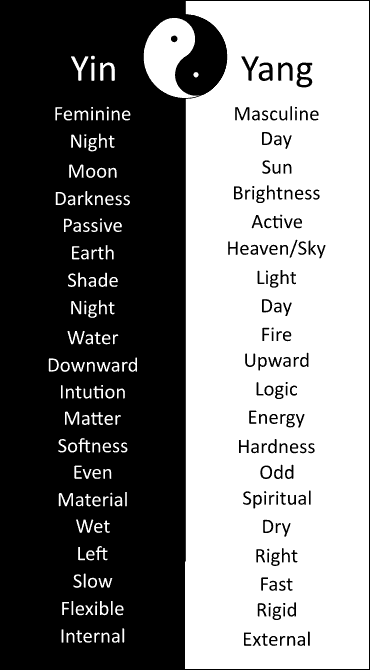
5 Ancient Symbols Similar to the Yin Yang
1. Hexagram or Six-Pointed Star
An ancient symbol that comes very close to the concept of Yin Yang is the Six-Pointed star (hexagram). This star depicts two interlocked equilateral triangles, one facing upward and the other facing downward. They have a common center.
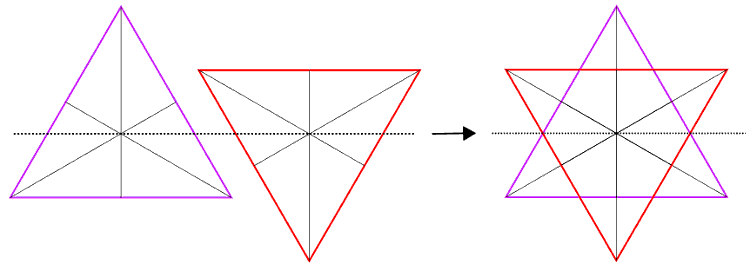
The upward facing triangle represents divine masculine energy and the downward one represents the divine feminine. Their interlocking symbolizes creation with the common center representing the source of all creation.
Interestingly, when we connect the centers of all three sides of the equilateral triangle, we form a smaller triangle facing the opposite direction of the main triangle.
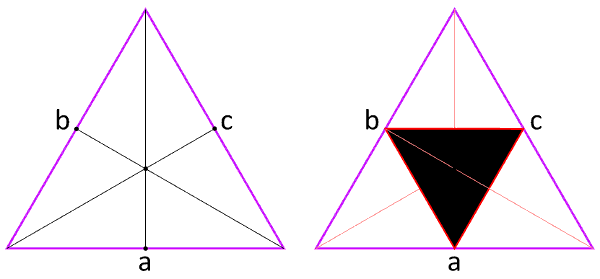
This smaller triangle symbolizes the presence of the masculine within the feminine and vice versa, similar to the concept of Yin and Yang. You can observe this in the image below.

Interestingly, the six-pointed star is also present right within the Yin Yang symbol as depicted in the image below.

The six-pointed star is an ancient symbol present across various cultures including Hinduism where it is called the Shatkona and in Judaism where it is known as the Star of David. This symbol is particularly popular in Hinduism where it is found in many Yantras (sacred geometrical shapes) like the Vishnu Yantra, Lakshmi Yantra, and the Gayatri Yantra.
2. Vesica Piscis
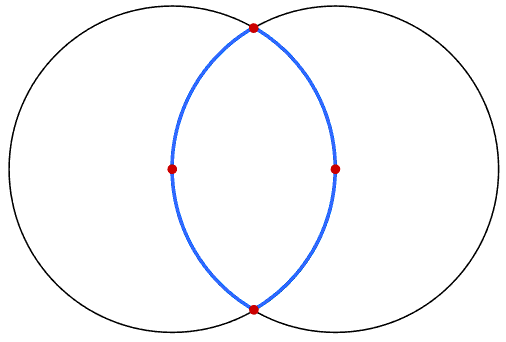
Another symbol that is very similar to the Yin Yang is the Vesica Piscis. The Vesica Piscis consists of two overlapping circles that overlap in such a way that the circumference of one circle passes through the center of the other. One circle represents the divine masculine and other the divine feminine.

The almond-like shape formed by their intersection represents the Cosmic Womb from where creation emanates.
3. Torus

Also, by overlapping 11 Yin Yang symbols on top of each other, we get the Torus symbol as depicted in the image below.

The Torus is a sacred shape found in various life forms like magnetic fields, electromagnetic field of the heart, the energy field around an atom, and even the aura around our bodies. Some say Earth is in the center of a toroidal electromagnetic field. It represents wholeness, connection, life’s cycles, and endless possibilities.
4. Caduceus

Another symbol akin to the Yin Yang is the Caduceus, which illustrates two serpents entwining around a staff. These serpents symbolize opposing forces, akin to the duality in the Yin Yang, such as material and spiritual, masculine and feminine. Furthermore, like the Yin Yang, the Caduceus signifies balance and the interconnectedness of all things.
5. Other Symbols Related to Yin Yang
In addition to these symbols, the Yin Yang can also be found in many sacred geometry symbols like the Seed of Life and the Celtic Five Fold symbol.
The following image depicts the Yin Yang within the Seed of Life symbol. Just like the Yin Yang, the Seed of Life symbolizes balance, interconnection, creation, and source energy.

The following image depicts the Yin Yang within the Celtic Five Fold symbol.

The Celtic Five Fold symbol represents the 5 elements of nature and the interconnection between them.
FAQs related to Yin Yang
How did the concept of Yin and Yang originate?
The idea of Yin and Yang came from ancient Chinese philosophy, where people noticed how nature’s cycles had two forces, Yin and Yang, working together to keep the universe balanced and harmonious.
Are Yin and Yang opposites or complementary forces?
Yin and Yang are both opposites and complementary forces, working together to create balance and harmony in the universe.
Why do the Yin and Yang portions of the symbol contain a dot of the opposite color?
The dots within the Yin and Yang portions of the symbol indicate that within each force exists the seed of its opposite. This conveys the interconnected and interdependent nature of Yin and Yang, emphasizing that neither can exist without the other and that they continuously influence and transform into one another.
What are some examples of Yin and Yang in daily life?
Here are a few examples:
- Day (Yang) and Night (Yin)
- Sun (Yang) and Moon (Yin)
- Activity (Yang) and Rest (Yin)
- Heat (Yang) and Cold (Yin)
- Male (Yang) and Female (Yin)
- Exterior (Yang) and Interior (Yin)
- Brightness (Yang) and Darkness (Yin)
- Sound (Yang) and Silence (Yin)
- Growth (Yang) and Decay (Yin)
- Upward movement (Yang) and Downward movement (Yin)
Are there foods associated with Yin and Yang energies?
Yes. In Traditional Chinese Medicine (TCM), foods are categorized based on their energy properties. Yin foods, generally cooling and moistening, include items like bananas, watermelons, apples, spinach, lettuce, and cucumbers. Yang foods, usually warming, include foods like red meats, onions, and peppers. Eating a balance of both types helps maintain a harmonious flow of Qi (energy) within the body.
How is the concept of Yin and Yang different from the Western understanding of duality?
While Western duality often considers opposing forces as separate and opposing (like good vs. evil), Yin and Yang represent complementary, interdependent energies. In this Eastern perspective, neither is inherently good or bad; instead, they exist in relation to one another, working together to create harmony.
Can Yin or Yang exist independently of the other?
No, Yin and Yang are interdependent. The presence of one defines the existence of the other. The very nature of their relationship implies that neither can be isolated or exist independently.
Can an individual’s Yin and Yang be balanced through practices like Tai Chi, Qigong, or meditation?
Yes, practices like Tai Chi, Qigong, and meditation aim to harmonize Yin and Yang within the individual. By promoting the flow of Qi and addressing energy blockages, these practices can help balance these dual forces, leading to better health, tranquility, and a sense of holistic well-being.
Conclusion
Despite its simplicity, Yin Yang is a powerful symbol that that holds immense knowledge within. The more you study this symbol the more secrets it unveils. Thus meditating on this symbol and on its meanings can be a truly liberating experience.
If this symbol resonates with you, consider incorporating it in your daily life, by meditating on it, drawing it, having it around your home, wearing it, and visualizing it in your mind’s eye and it will reveal to you many secrets that will change your understanding of this universe and liberate your mind.





